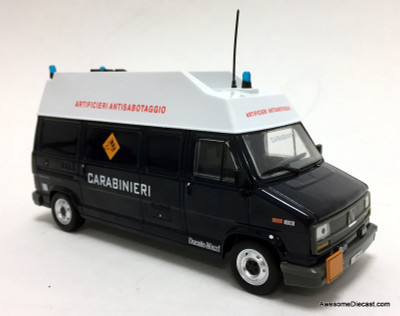The Fiat Ducato is a light commercial vehicle developed by the Sevel joint venture between Fiat and PSA Peugeot Citroën, produced since 1981. It was also sold as the Citroën C25, Peugeot J5, Alfa Romeo AR6 and Talbot Express for the first generation, while the second and third generations are marketed as the Fiat Ducato, Citroën Jumper, and Peugeot Boxer. It entered the Canada and United States markets as the Ram ProMaster for the 2014 model year.
In Europe, it is produced at the Sevel Sud factory, in Atessa, Italy. It has also been produced at the Iveco factory in Sete Lagoas, Brazil, at the Karsan factory in Akçalar, Turkey, at the Lotus factory in Iran, at the Fiat Chrysler Automobiles Saltillo Truck Assembly Plant in Saltillo, Mexico, and at the Fiat-Sollers factory in Elabuga, Russia. Since 1981, more than 2.6 million Fiat Ducatos have been produced. The Ducato is the most common motorhome base used in Europe; with around two thirds of motorhomes using the Ducato base.
Fiat Professional's first all-electric vehicle will join an Ducato lineup for the 2020 model year. The Fiat Ducato van, representing around 75 percent of European RVs, will now be accessible as an electric.
New Sevel produced version. Peugeot called it Boxer while Citroën named it Jumper (Relay in the United Kingdom). One engine option was a Fiat 2.5 L diesel, which was replaced with 2.8 L Iveco/Sofim engine in 1998.
The Ducato Goods Transport has a payload of 12 m cubed and comes with a choice of four engines: the 2.0 petrol, 2.0 JTD, 2.3 JTD 16v or 2.8 JTD. All of these conformed to the Euro 3 standards and offered programmed maintenance management. The range included two types of gearbox: a mechanical box with a five-speed manual plus reverse and an automatic transmission with four speeds plus reverse.
The Ducato Passenger Transport has a carrying capacity of six to nine people and comes with the 2.3 litre JTD 16v engine, which again is Euro 3 compliant and delivers 110 bhp.
The Ducato Combi is a mixture of the Goods Transport and the Passenger Transport. It is ideal for the transport of people and goods alike, and it can accommodate up to nine occupants. Model designations were Ducato 10 (1 ton), Ducato 14 (1.4 tons) and Ducato Maxi 18 (1.8 tons).
The second series was restyled in February 2002, with the addition of rear and side bump mouldings and revised front grille. The engine range was: 2.0 JTD, 2.3 JTD 16v and 2.8 JTD, 2.5 diesel was dropped. Model designations were changed to reflect maximum gross weight: Ducato 29 (2.9 tons), Ducato 30 (3.0 tons), Ducato 33 (3.3 tons) and Ducato Maxi 35 (3.5 tons).
On 15 December 2005, the three millionth vehicle was produced, which resulted in the rate of production increasing to nine vehicles per day. This generation is now also produced at the Iveco plant in Sete Lagoas, Brazil and since 2006 in Elabuga, Russia.
















